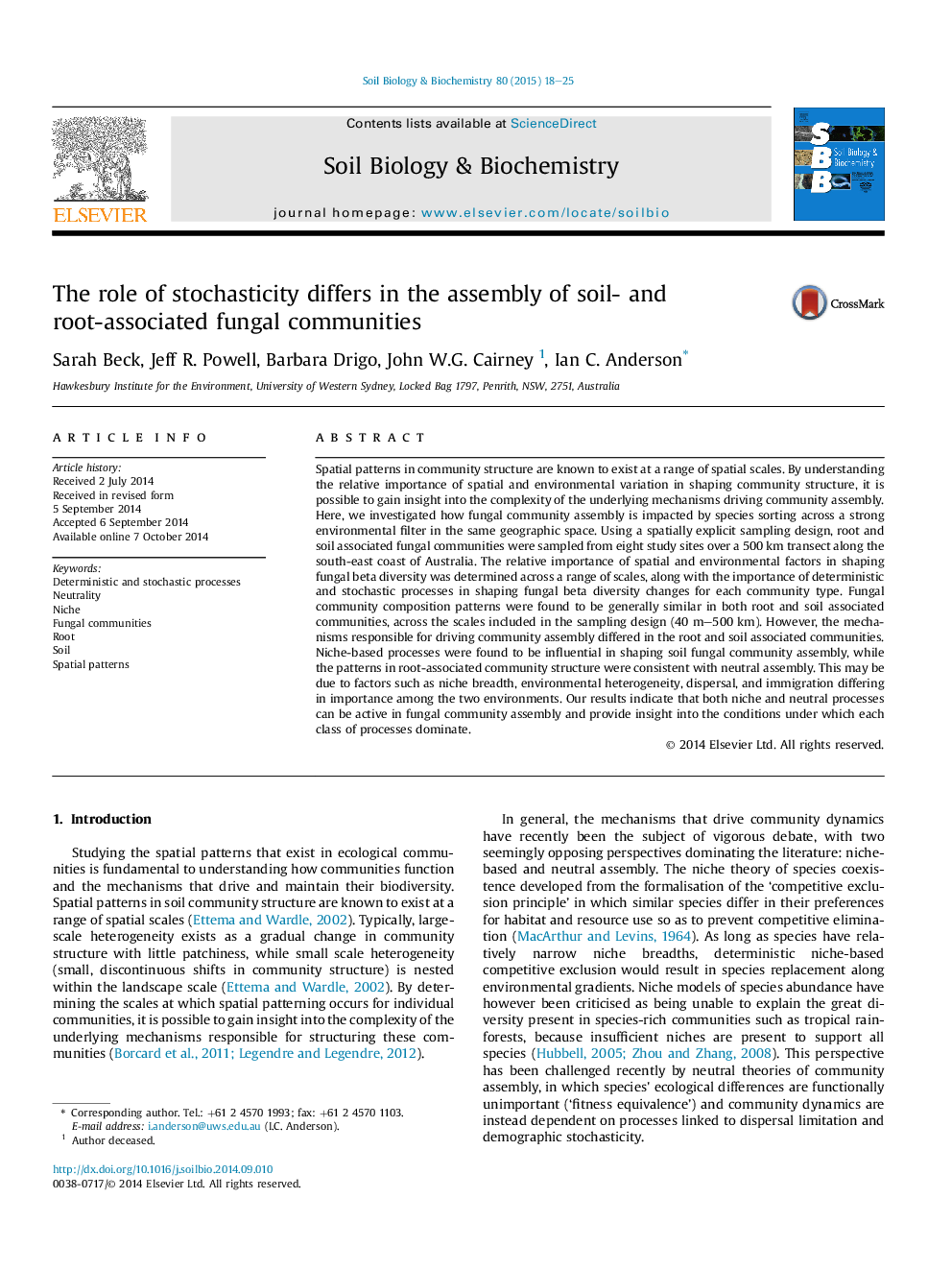| Article ID | Journal | Published Year | Pages | File Type |
|---|---|---|---|---|
| 8364358 | Soil Biology and Biochemistry | 2015 | 8 Pages |
Abstract
Spatial patterns in community structure are known to exist at a range of spatial scales. By understanding the relative importance of spatial and environmental variation in shaping community structure, it is possible to gain insight into the complexity of the underlying mechanisms driving community assembly. Here, we investigated how fungal community assembly is impacted by species sorting across a strong environmental filter in the same geographic space. Using a spatially explicit sampling design, root and soil associated fungal communities were sampled from eight study sites over a 500Â km transect along the south-east coast of Australia. The relative importance of spatial and environmental factors in shaping fungal beta diversity was determined across a range of scales, along with the importance of deterministic and stochastic processes in shaping fungal beta diversity changes for each community type. Fungal community composition patterns were found to be generally similar in both root and soil associated communities, across the scales included in the sampling design (40Â m-500Â km). However, the mechanisms responsible for driving community assembly differed in the root and soil associated communities. Niche-based processes were found to be influential in shaping soil fungal community assembly, while the patterns in root-associated community structure were consistent with neutral assembly. This may be due to factors such as niche breadth, environmental heterogeneity, dispersal, and immigration differing in importance among the two environments. Our results indicate that both niche and neutral processes can be active in fungal community assembly and provide insight into the conditions under which each class of processes dominate.
Related Topics
Life Sciences
Agricultural and Biological Sciences
Soil Science
Authors
Sarah Beck, Jeff R. Powell, Barbara Drigo, John W.G. Cairney, Ian C. Anderson,
